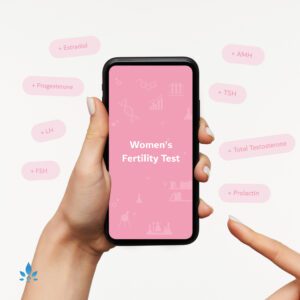What is Endometriosis?


- Endometriosis is a condition where endometrial tissue grows outside the uterus.
- Endometrial tissue is tissue that is similar to the lining of the uterus or womb.
- With endometriosis, the endometrial tissue usually occurs in the fallopian tubes or ovaries.
- This can cause swelling and chronic pain, an accumulation of blood and the formation of cysts.
- Endometriosis can be treated with medication and, in severe cases, the tissue can be removed surgically.
Endometrial tissue growing elsewhere still behaves in the same way as normal endometrial tissue, meaning that every month it thickens, breaks down and bleeds. Unlike normal endometrial tissue, which is released from the body during a woman’s monthly menstrual period, tissue that is located elsewhere in the body has nowhere to go. Thus, it accumulates; causing swelling, followed by inflammation and pain. Scar tissue can cause irritation to the surrounding tissue and, if the ovaries are affected, blood can accumulate forming cysts called endometriomas.
Symptoms of Endometriosis
Whilst 20-25% of patients with endometriosis are asymptomatic, of the 75-80% who are affected, the symptoms can be quite debilitating. Symptoms may include chronic pelvic pain, which occurs around the same time as menstruation, bowel and bladder problems and heavy periods. One of the main complications of the condition is problems with fertility, which affects up to 40% of women with endometriosis. In severe cases, the endometrial tissue will have to be surgically removed.
Endometriosis is a long-term condition that typically affects women in their 30s and 40s. The chronic nature of the symptoms means that patients will often experience concurrent depression and fatigue. It is also sometimes confused with irritable bowel syndrome, as the symptoms can be very similar.
Treatment of Endometriosis
Endometriosis treatment often include medication, pain killers and possible surgery to remove the endometrial tissue. Medications can include:
- Hormonal contraceptives. Hormonal contraceptive pills can control the amount of endometrial tissue that thickens and bleeds each month. Many have lighter and shorter menstrual flow when they’re using a hormonal contraceptive and therefore it is possible to reduce pain by taking the pill.
- Gonadotropin-releasing hormone (Gn-RH) agonists and antagonists. These help endometrial tissue to shrink by blocking oestrogen hormones, creating an artificial menopause.
- Progestin. Taking progestin supplements or using a progestin implant can stop women from experiencing periods meaning there is no build up of endometrial tissue each month. These are often taken with aromatase inhibitors that decrease the amount of oestrogen in your body.
What causes Endometriosis?
The exact cause of endometriosis remains unknown. It is thought to be due to a combination of genetic susceptibility, hormonal imbalance and immune system dysfunction. Retrograde menstruation is also believed to play a role. Retrograde menstruation occurs when menstrual blood containing endometrial cells enters the fallopian tube instead of leaving the body. This is known as the transplantation theory and can also occur when the endometrial cells travel elsewhere in the body via the bloodstream.
Living with endometriosis can be challenging, both emotionally and physically. If you are affected and it is having an impact on your quality of life, the first step is to seek medical advice and support.
Nabta is reshaping women’s healthcare. We support women with their personal health journeys, from everyday wellbeing to the uniquely female experiences of fertility, pregnancy, and menopause.
Get in touch if you have any questions about this article or any aspect of women’s health. We’re here for you.
Sources:
- Bulletti, C, et al. “Endometriosis and Infertility.” Journal of Assisted Reproduction and Genetics, vol. 27, no. 8, Aug. 2010, pp. 441–447., doi:10.1007/s10815-010-9436-1.
- Koninckx, P R, et al. “Pathogenesis of Endometriosis: the Genetic/Epigenetic Theory.” Fertility and Sterility, vol. 111, no. 2, Feb. 2019, pp. 327–340., doi:10.1016/j.fertnstert.2018.10.013.
- Overview: Endometriosis. NHS, www.nhs.uk/conditions/endometriosis/. Page last reviewed: 18/01/2019.
- Understanding Endrometriosis. Endometriosis UK, www.endometriosis-uk.org/understanding-endometriosis.
- Endometriosis. Mayo Clinic, 24 July 2018, www.mayoclinic.org/diseases-conditions/endometriosis/symptoms-causes/syc-20354656.













































